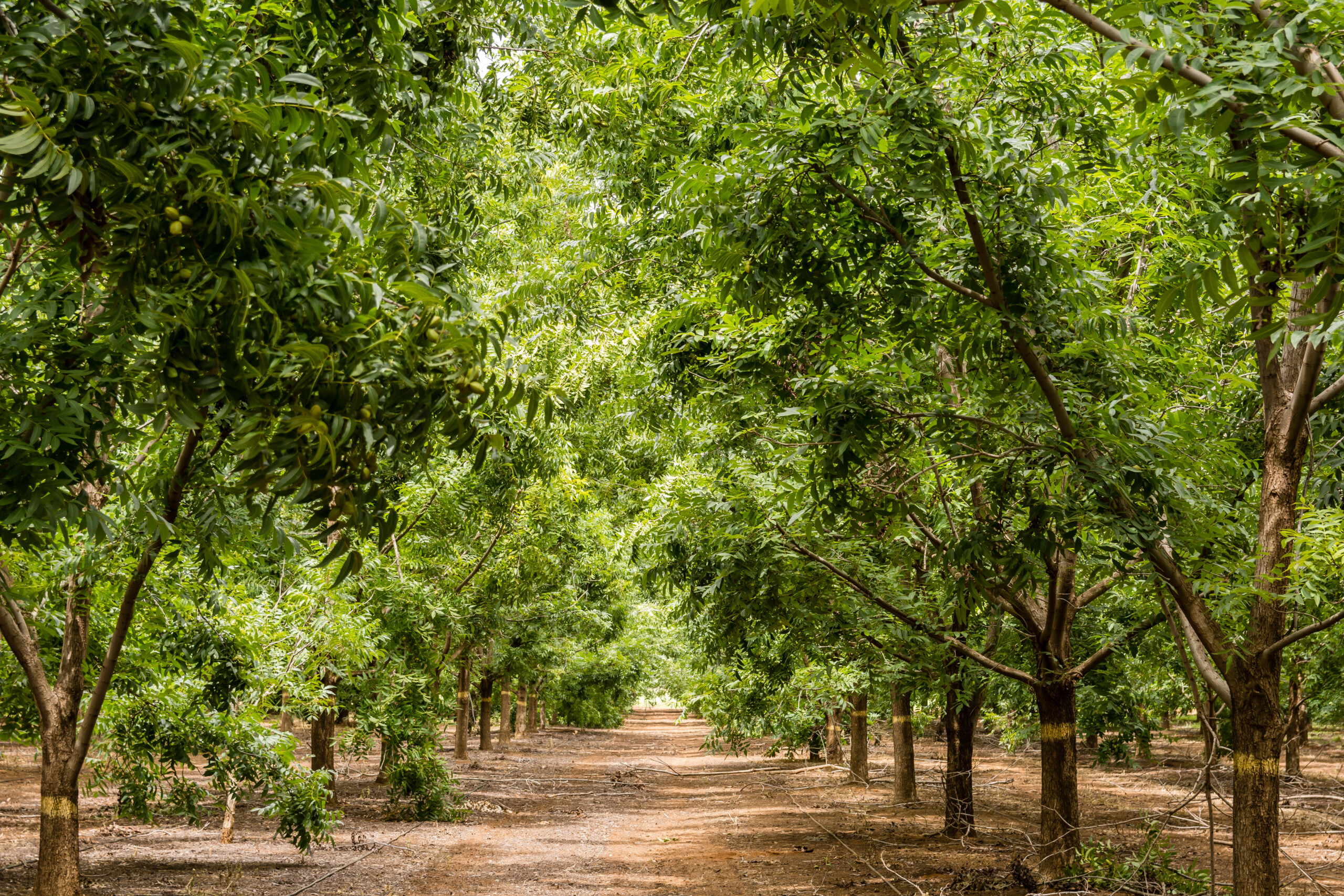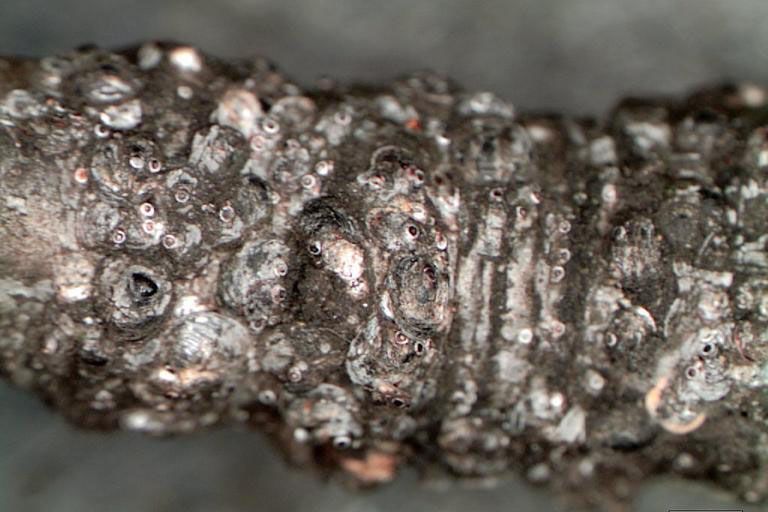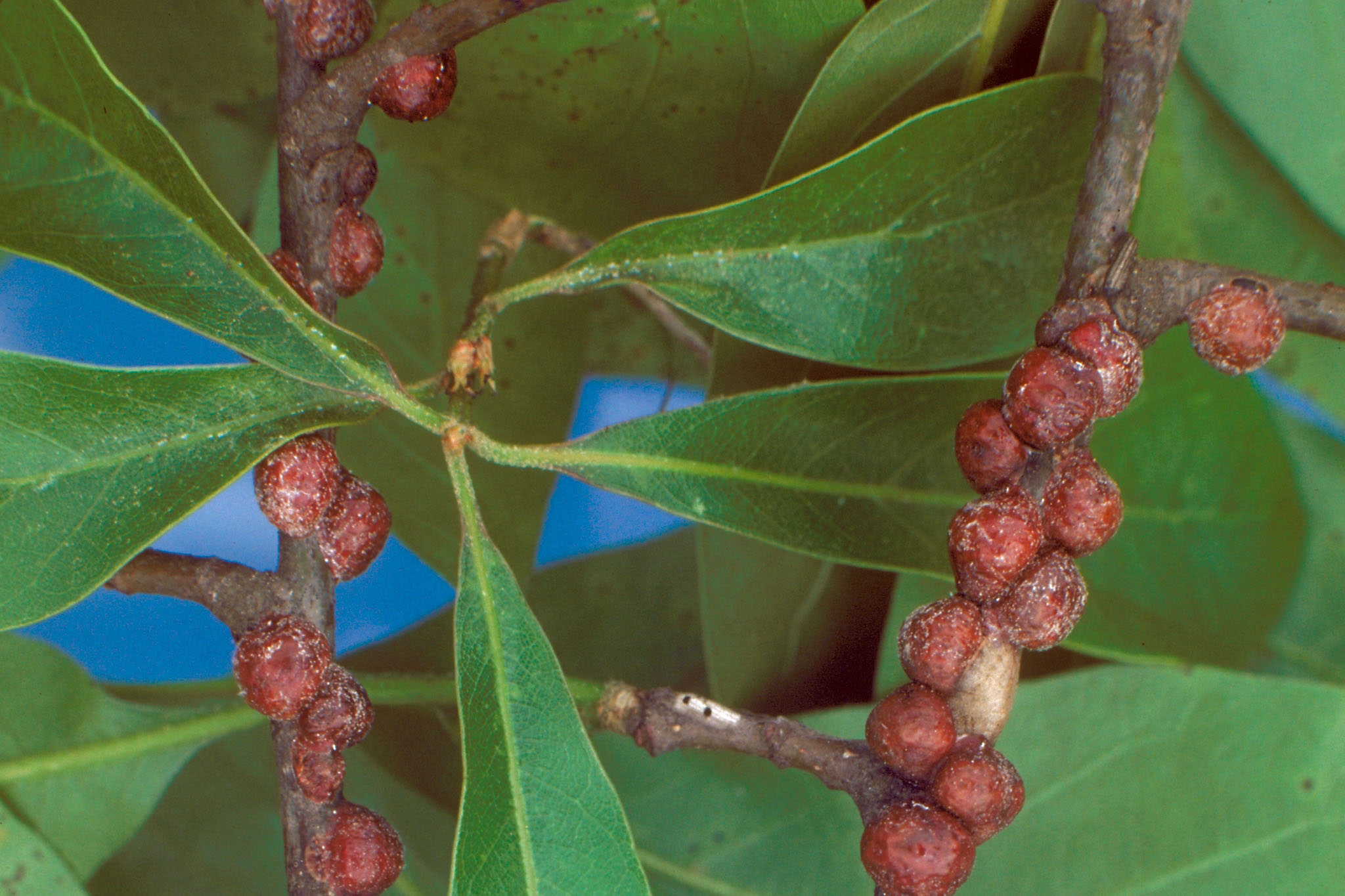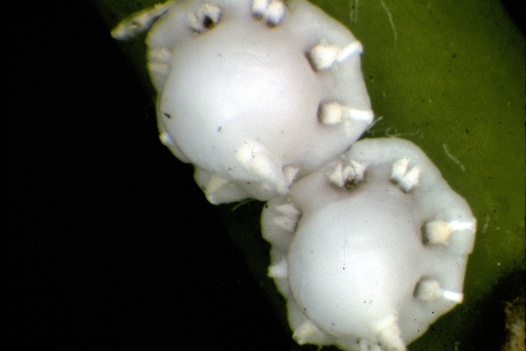Trees
-

As pecan trees grow in an orchard, their tree canopies encroach upon one another, causing excessive shading, which can increase alternate bearing intensity and reduce tree health and orchard profitability. Historically, limb pruning and tree removal have been the most common methods of dealing with this problem, particularly in the low-light environment of the southeastern United States. Mechanical hedge pruning has been used successfully in high-light environments to mitigate the effects of orchard shading and has become the standard method used for this purpose in the arid production regions of the western United States. The southeastern United States is a relatively low-light environment, exhibiting significant cloud cover and atmospheric water vapor throughout the growing season, which can further limit sunlight in orchard systems. Mechanical hedge pruning offers a solution to this problem, which can also help minimize issues related to pecan scab, hurricanes/tropical storms, and alternate bearing.
Lenny Wells and Andrew Sawyer
|
-

Gloomy scale (Melanaspis tenebricosa) is a serious insect pest that affects maple trees in urban Georgia. It can go undetected for years. Affected trees can show branch dieback and canopy thinning after 6–10 years, when the population reaches extremely high densities. A waxy shield covering protects females from predators and insecticide exposure, and usually gives them a convex shape.
The armored scale wax covering on the bodies of gloomy scale can be detached using a knife. This is different than soft scales, such as wax scales, which are glued to the females’ bodies. Gloomy scales do not produce honeydew, also unlike soft scales. Female gloomy scales have piercing and sucking mouthparts that look like tubes that are inserted into the parenchyma cells (cells that synthesize and store trees’ organic products) in the epidermal layer of tree bark. Male gloomy scales do not have mouthparts. The black and gray dust that deposits on tree bark makes scale detection even more challenging over time, as they camouflage to the color and texture of the bark. This is especially true for trees planted along right-of-ways and parking lots.William G. Hudson and Shimat V. Joseph
|
-

Oak lecanium, Parthenolecanium quercifex (Hemiptera: Coccidae), is a common soft scale insect pest of oak trees and other woody plants. They infest trees under high stress, such as those planted in parking lots, greenscapes, and other urban areas. Like other soft scale insects, oak lecanium scales feed on tree sap, and they excrete the excess sugars as honeydew. Sooty mold fungus grows on honeydew, and its black color blocks sunlight and interrupts photosynthesis. Although lecanium scales have little immediate impact on twigs and branches, extensive infestation and subsequent feeding damage may weaken or kill the tree over time. The problems with lecanium scale are worsened in urban landscapes where local temperatures are generally higher. Higher temperatures decrease the relative number of parasites that feed on scale insects, and the high densities of surviving females continue to produce viable eggs.
William G. Hudson and Shimat V. Joseph
|
-

Scale insects are very common pests of landscape trees
and shrubs, yet they often are overlooked when scouting.
They can, however, be responsible for chlorosis (loss of
green coloration of plants due to lack of chlorophyll),
branch dieback, or death of the plant. Wax scales are
part of the soft scale group as they produce soft, cottony,
powdery, or waxy covers that cannot be separated from
the scale body. Indian wax scale (Ceroplastes ceriferus);
Figure 1) and Florida wax scale (Ceroplastes floridensis;
Figure 2) are the common wax scale species that occur in
Georgia. Indian wax scale is prevalent in the eastern U.S.
from Florida to Maryland. Florida wax scale is found from
Florida to New York and westward to New Mexico.William G. Hudson and Shimat V. Joseph
|
-

We can positively affect pollinator populations in our region by providing plants that help sustain them. Pollinators face the increasing challenges of habitat loss, parasite and disease pressure, and the unintended consequences of pesticide misuse. Bee forage plants can bloom season-long with careful plant selection appropriate to the region. A combination of herbaceous perennial and annual plants, trees, and shrubs can provide valuable resources to bees and other pollinators. Even grasses can be used by bees as a pollen source, while crape myrtles can provide a later season resource for pollinators. Anyone—from individual home gardeners to commercial and agricultural property managers—can promote pollinator health by selecting and planting appropriate plants. This guide provides options for selecting flowering woody plants that are attractive to bees and butterflies and sometimes have additional wildlife benefits.
S. Kris Braman, Bodie V. Pennisi, Kim Toal, and Elizabeth McCarty
|
-

B 1357
Growing Bamboo in Georgia
This resource provides a simple, user-friendly guide on growing bamboo in Georgia, a state that has a wide variety of soils and temperate zones.
Bodie V. Pennisi
|
-

Many people help with tree cleanup after storms pass through. Some are citizen volunteers, and others are private and public sector workers who may or may not have experience with chainsaws. This presentation covers the information every chainsaw operator needs to know before turning on the saw. Topics include personal protective equipment, the five essential safety features of a chainsaw, safe carry, safe start, insect pests, site inspection, and electrical/electrocution hazards. Authors include E.M. Bauske, W. Williams, H. Kolich, J. Fuder, and A. Martinez-Espinoza.
Alfredo Martinez, Ellen M. Bauske, Heather Kolich, and Josh Fuder
|
-

Muchas personas ayudan con la limpieza de los árboles después de las tormentas. Algunos son ciudadanos voluntarios; otros son trabajadores del sector público y privado que pueden o no tener experiencia con motosierras. Este PowerPoint cubre la información que todo operador de motosierra necesita saber antes de encender la motosierra. Los temas incluyen equipo de protección personal, las cinco características esenciales de seguridad de una motosierra, transporte seguro, arranque seguro de la motosierra, plagas de insectos, inspección del sitio y riesgos con electricidad/electrocución.
Alfredo Martinez, Ellen M. Bauske, Heather Kolich, and Josh Fuder
|
-

C 1199
Storm Damaged Tree Cleanup
Trees are often damaged in storms and can be extremely dangerous to clean up. Storm damaged trees are subject to all the perils associated with tree felling and much more. Working conditions may be difficult. Downed trees may be entangled in other trees, or tossed on buildings, vehicles, or wires. Energy stored in compressed limbs and trunks can be release suddenly, explosively, and fatally. Each situation is unique and requires careful consideration. Application of the included five-step cutting plan will help keep the saw operator safe and working effectively. Authors include E.M. Bauske, P. Kelley, W. Williams, and A. Martinez-Espinoza.
Alfredo Martinez and Ellen M. Bauske
|